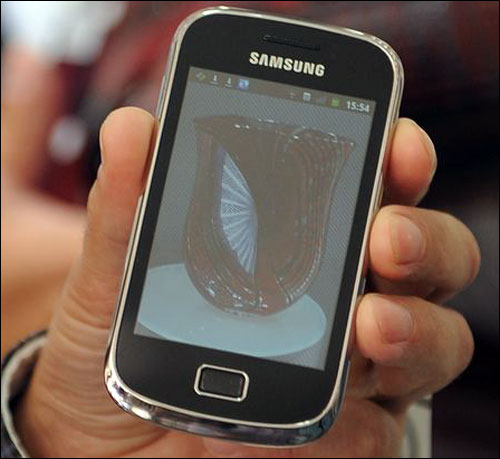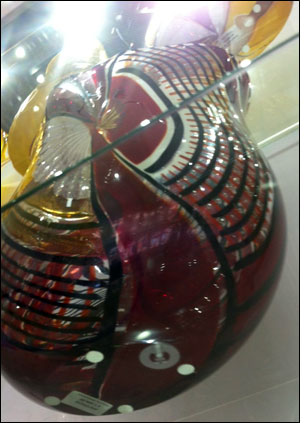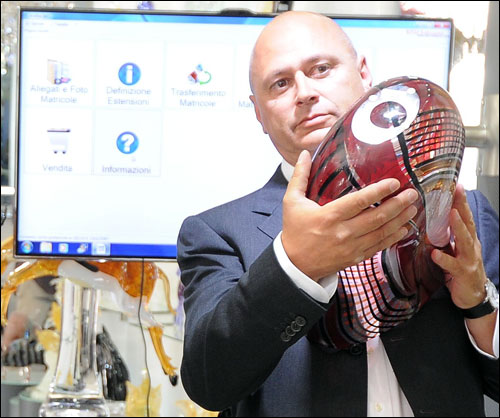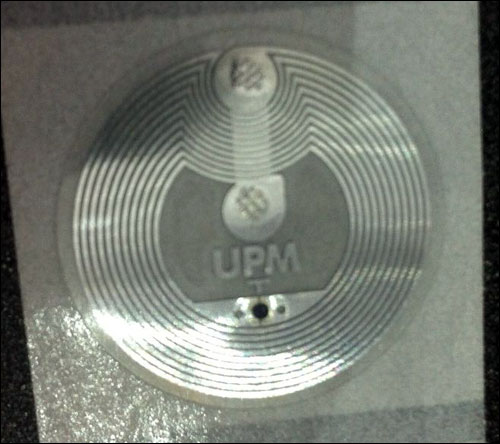Aug 07, 2012Linea Murano Art, an Italian art gallery where local artisans create and market vases and other glass objects, is protecting the authenticity of the work of Afro Celotto, using passive Near Field Communication (NFC) RFID tags that enable buyers and members of the public to learn about the artist and his artwork—and, most importantly, ensure that the objects are the real things, and not copies. The gallery is attaching an NFC tag to every piece of Celotto art, and is linking that tag's ID number to details about that work on its own server.

Linea Murano Art sells the works of multiple artists, including that of Afro Celotto, says Nicola Foccardi, the gallery's CEO. Celotto's art is sold worldwide, commanding a high price. Because the objects he creates are so highly prized, some individuals have begun copying his techniques and selling their own work as his. This not only cheats buyers, but also diminishes the value of Celotto's creations, according to Ferruccio Ferrari, the general manager of Novarex, the company that provided the tags and software to link read events to data on the gallery's server.
Celotto and Foccardi began seeking a technology that could prove to a buyer that a piece of art was, indeed, Celotto's. But they also wanted a method for providing information to prospective buyers.

Before the NFC tags were added, buyers had to simply trust that the displayed artwork was authentic, Foccardi explains; now, with the RFID system in place, they have proof. To develop the solution, Linea Murano Art and Celotto worked with RFID Soluzioni, Novarex's RFID division. The system consists of NFC tags, a Samsung Galaxy Mini NFC-enabled smartphone, an NFC reader plugged into a PC, and RFID Soluzioni's software on Linea Murano's server, to store data regarding each piece of art.
RFID Soluzioni conducted a series of tests of NFC technology within its own laboratory, in order to determine whether the tags could be read on and through glass. "There were no particular difficulties," Ferrari reports. The company's software links each tag's ID with information about the art object to which that tag is attached, including a PDF of its certificate of authenticity, as well as photos of the work and the artist, and potentially a video of that piece's creation. Additional data could be included as well, Foccardi notes, such as the buyer's name.

On June 28, 2012, Linea Murano first demonstrated the system to the public. The gallery has since tagged all of its Celotto pieces (a total of about 300). In the future, it may also attach tags to other artists' work.
With the new system, as Celotto completes a piece of art at his gallery (located within Linea Murano's premises, and co-owned by that company), Linea Murano glues a Smartrac Circus RFID tag to its base. A staff member then enters the ID number unique to that tag into the software on the gallery's server, including data and photos related to the artwork.
Upon purchasing a piece of art, a customer can request to have his or her own name added to that item's data, so that anyone using an NFC reader could view not only details about the art, but also the owner's identity.
In addition, Linea Murano has an NFC reader that transmits read data back to a PC with a 46-inch screen, so that the information can be viewed on a screen larger than that of a mobile phone. Customers can use this interrogator as an alternative to the mobile phone if they so choose.
According to Foccardi, he and Celotto are still observing the technology in use, in order to determine its success. Art-buying clients have shown an interest in reading the tags, he says. However, the greatest benefit has been the assurance that the gallery can guarantee the authenticity of the work that it sells.



